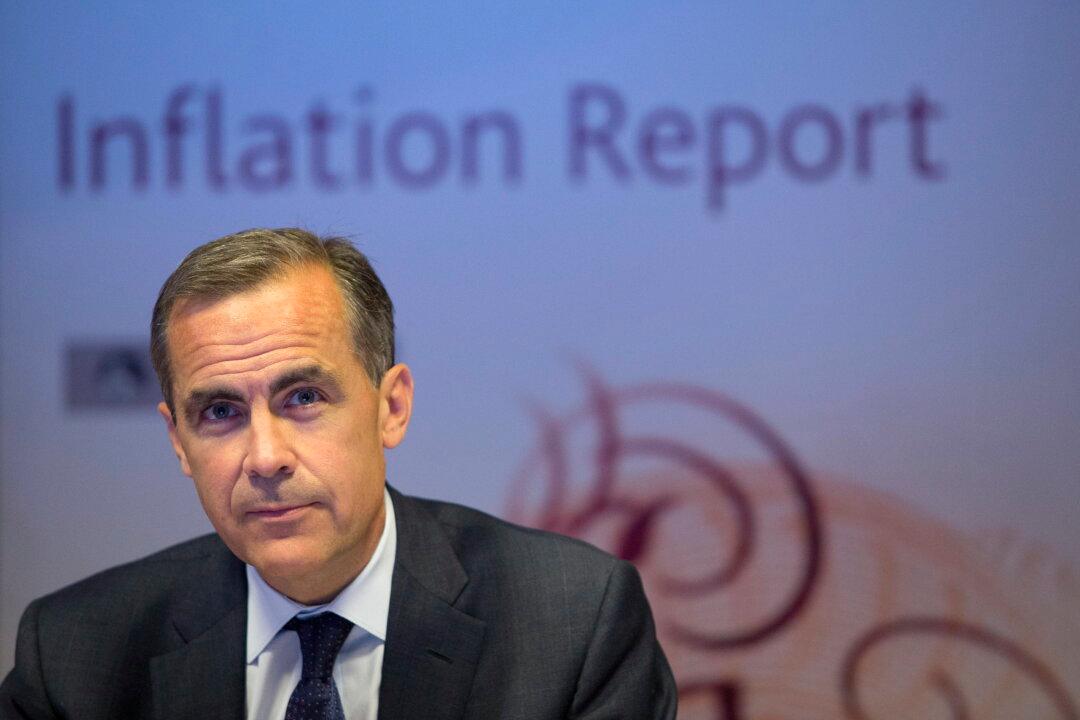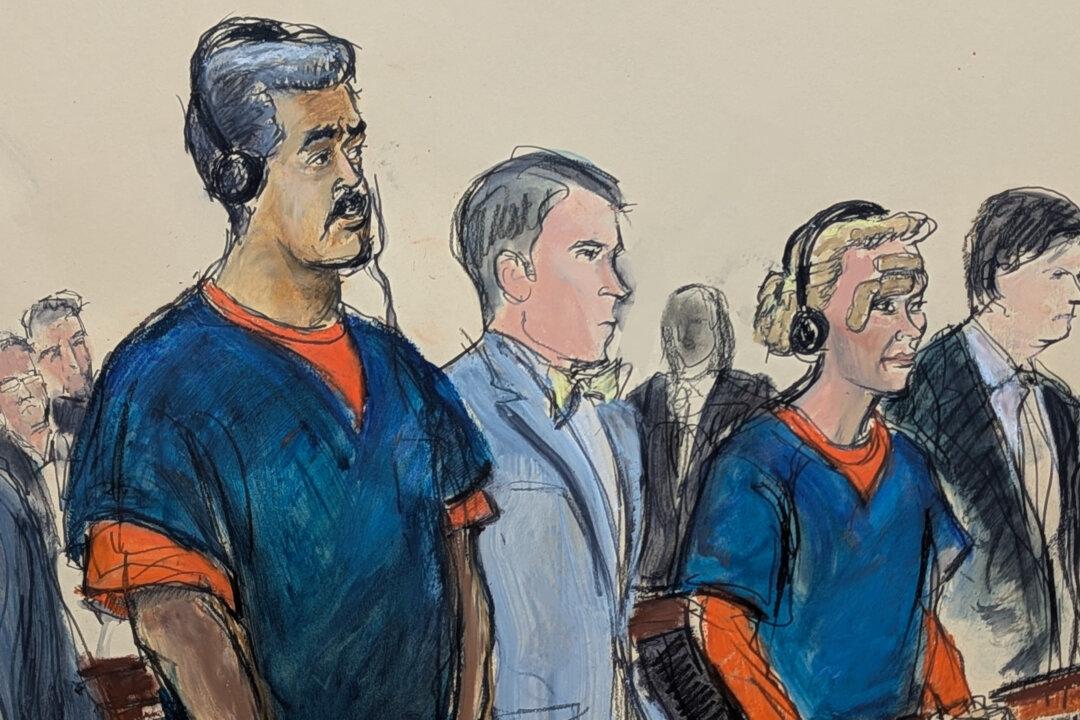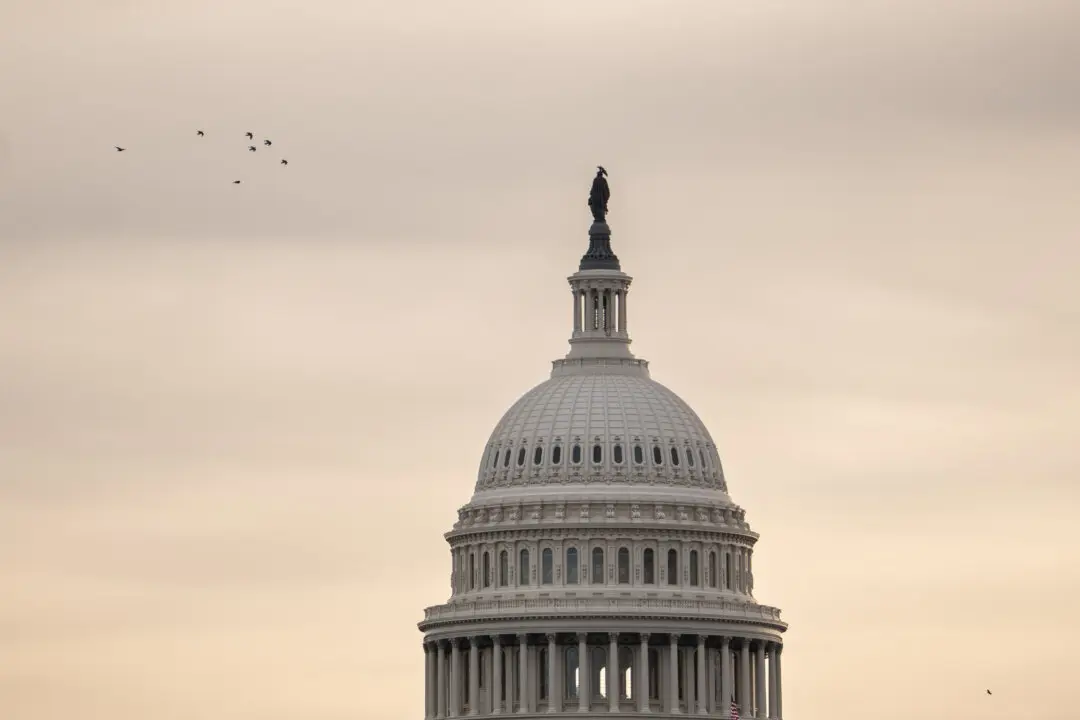LONDON—Mark Carney, the Bank of England’s new governor, sought to spur Britain’s sluggish recovery Wednesday when he said the central bank will not consider raising its record-low interest rate until unemployment falls below 7 percent.
In a significant change of policy for the Bank of England, Carney outlined the bank’s “forward guidance” in one of the most closely watched press conferences by the U.K.’s monetary authority.
With the current U.K. unemployment rate at 7.8 percent, the economy would need to create about 750,000 new jobs—something the bank feels won’t happen until 2016—before the benchmark interest rate is increased from the current 0.5 percent.
Unveiling a tool he first used as governor of the Bank of Canada, Carney said it was “exactly the time” to give such forward guidance—stressing that this was a critical moment for policymakers because the U.K’s economy was still performing below par.
“It is the weakest recovery on record,” he said, and deadpanned that “records go back 100 years.”
The bank joins the U.S. Federal Reserve and European Central Bank in providing guidance on its interest rate policies. Carney’s policy has also been attributed in helping stimulate spending and economic growth in Canada.
The new governor used simple language to put over his ideas to the public, suggesting that if people know interest rates will remain low they will be more likely to borrow and thereby help stimulate the economy.
The 48-year-old Carney, who took charge on July 1, stressed that unemployment falling to 7 percent would not automatically trigger an increase in interest rates but would be a “way station” to reassess bank policy.
The bank chief also said there were several “knockouts” that would mean abandoning the forward guidance and the link between rates and unemployment.
These include the bank’s watchdog, the financial policy committee, deciding that monetary policy poses a threat to financial stability, or if two-year forecasts show inflation rising 0.5 percentage points or more above its target of 2.0 percent.
Alistair Cotton, a senior analyst at Currencies Direct, said the message was “bullish” and designed to boost confidence.
“By tying policy to unemployment, which is a clearly measured and very visible economic variable, the bank is making a communication statement allowing the average man in the street or business owner a much more visible and transparent measure of the bank’s thinking,” he said in a statement.
“Everyone can understand the unemployment rate, less so for other variables like tying policy to nominal or real GDP.”
The bank chose employment, rather than output, as the best indicator for interest rates because the current level of low productivity in the U.K. indicates there is slack in the economy. This means that production can rise before employers need to hire more workers.
Carney said policymakers stand ready to stimulate the economy further. The bank has pumped 375 billion pounds into the economy since January 2009 with a bond-buying program meant to revive national fortunes—and said it has no plans to scale back its efforts while unemployment remains above 7 percent.
Saying that “a renewed recovery is now underway” but that the U.K. economy has not yet reached “escape velocity,” Carney also downgraded inflation forecasts by saying the bank does not expect inflation to rise above 3 percent this year.
The Associated Press contributed to this report.





